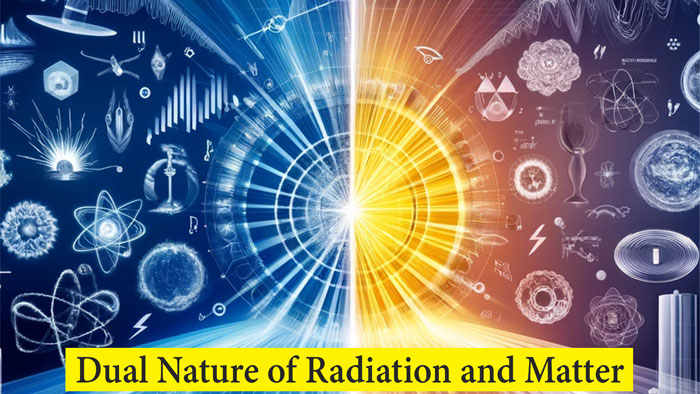Understanding the Dual Nature of Radiation and Matter: A Comprehensive Guide
Radiation is a fundamental concept in science, encompassing a broad range of phenomena that involve the emission and transmission of energy through space or matter. Whether you're interested in physics, medicine, environmental science, or just curious about the world around you, understanding the basics of radiation can offer valuable insights. This article aims to explore the nature of radiation, its types, sources, and implications for everyday life.
What is Radiation?
Radiation
refers to the process by which energy is emitted from a source and travels
through space or a medium. This energy can take various forms, including
electromagnetic waves, particles, or even acoustic waves. The key
characteristic of radiation is its ability to travel and transfer energy from
one point to another.

Types
of Radiation-
Radiation can be broadly categorized into two main types:
electromagnetic radiation and particle radiation. Here's a breakdown of each
type:
Electromagnetic
Radiation
Definition:
Electromagnetic radiation consists of waves of electric and magnetic fields
that travel through space at the speed of light.
Examples:
Light, radio waves, microwaves, X-rays, and gamma rays.
Characteristics:
Electromagnetic radiation varies in wavelength and frequency, which determines
its energy and type.
Particle
Radiation
Definition:
Particle radiation involves the emission of particles, such as electrons,
protons, neutrons, or alpha particles, from a source.
Examples:
Radiation from radioactive decay, cosmic rays, and particles produced in
high-energy physics experiments.
Characteristics:
Particle radiation can carry significant energy and is often associated with
ionizing radiation, which has the potential to remove electrons from atoms or
molecules.
Sources
of Radiation
Radiation
comes from a variety of sources, both natural and artificial. Here are some
common sources of radiation:
Natural
Sources:
Cosmic
Radiation: High-energy particles from space.
Terrestrial
Radiation: Radiation from radioactive materials in the Earth's crust.
Radon
Gas: A naturally occurring radioactive gas that can accumulate in buildings.
Artificial
Sources:
Medical
Imaging: X-rays, CT scans, and other diagnostic tools.
Nuclear
Power Plants: Radiation from nuclear reactors and waste.
Industrial
Applications: Radiation used in manufacturing and quality control.
Impacts
of Radiation
Radiation
can have both beneficial and harmful effects, depending on its type, energy,
and exposure level. Let's explore the impacts of radiation:
Beneficial
Uses:
Medical
Applications: Radiation therapy for cancer treatment and diagnostic imaging.
Industrial
Applications: Non-destructive testing, sterilization, and quality control.
Communication:
Radio waves used for communication and broadcasting.
Harmful
Effects:
Health
Risks: Prolonged exposure to ionizing radiation can lead to radiation sickness,
cancer, and genetic mutations.
Environmental
Impact: Radiation from nuclear accidents or improper disposal of radioactive
waste can harm ecosystems.
Safety
Concerns: Radiation exposure in workplaces, especially in nuclear or medical
industries, requires strict safety protocols.
Safety
and Protection
Given
the potential risks associated with radiation, safety and protection measures
are crucial. Here are some key strategies for radiation safety:
Radiation
Shielding: Using barriers to block or reduce radiation exposure.
Personal
Protective Equipment (PPE): Wearing protective gear, such as lead aprons, in
high-radiation environments.
Radiation
Monitoring: Regularly measuring radiation levels in workplaces and public
areas.
Regulations
and Standards: Compliance with safety regulations and guidelines set by
organizations like the International Atomic Energy Agency (IAEA).
Conclusion
Radiation
is a complex and multifaceted phenomenon with a wide range of applications and
implications. Understanding the nature of radiation, its sources, types, and
effects, is essential for making informed decisions about safety, health, and
the environment. By exploring the basics of radiation, we can better appreciate
its role in our world and take appropriate measures to ensure its safe use.
